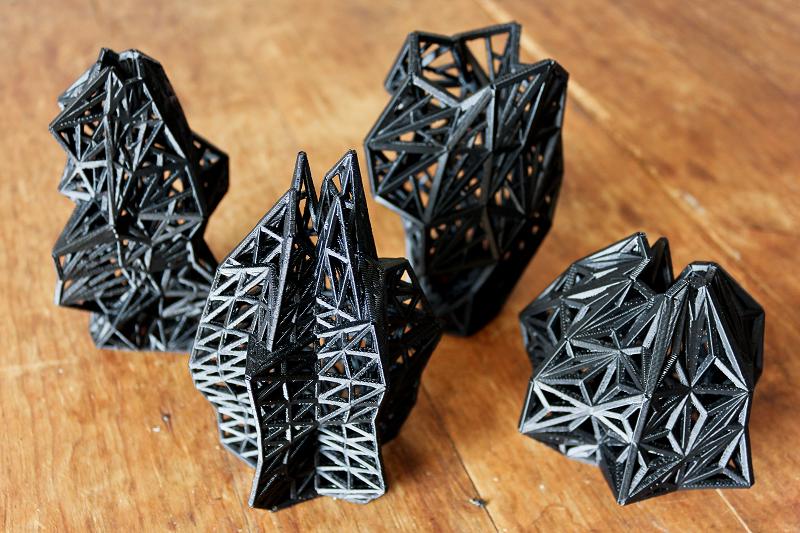I selected Marius Watz on the basis that he was not an American, but was intrigued immediately upon seeing his work. The work of his I chose to focus on was his Probability Lattice installation, which are printed figures from a Makerbot 3D printer. I was drawn to these as they seem to have ordered randomization, where the patterns change, but there is continuity that stems from the change. Finding where the change occurs is fascinating. Watz does not explain his process or algorithm, so I did some research regarding the work’s title. Lattice theory, to put briefly, deals with order theory in regards to abstract and advanced algebra. I assume that the algorithm used by Watz randomizes probabilities with equations that produce these lattice diagrams, as he has other probability series that create other shapes with different algorithm titles. Watz is known for his bold style, ranging from sharp lines, boxy shapes, and bright colors. The algorithms I am assuming he uses must come through in this nature.
Probability Lattice, Marius Watz, May 9, 2012
![[OLD FALL 2020] 15-104 • Introduction to Computing for Creative Practice](https://courses.ideate.cmu.edu/15-104/f2020/wp-content/uploads/2021/09/stop-banner.png)